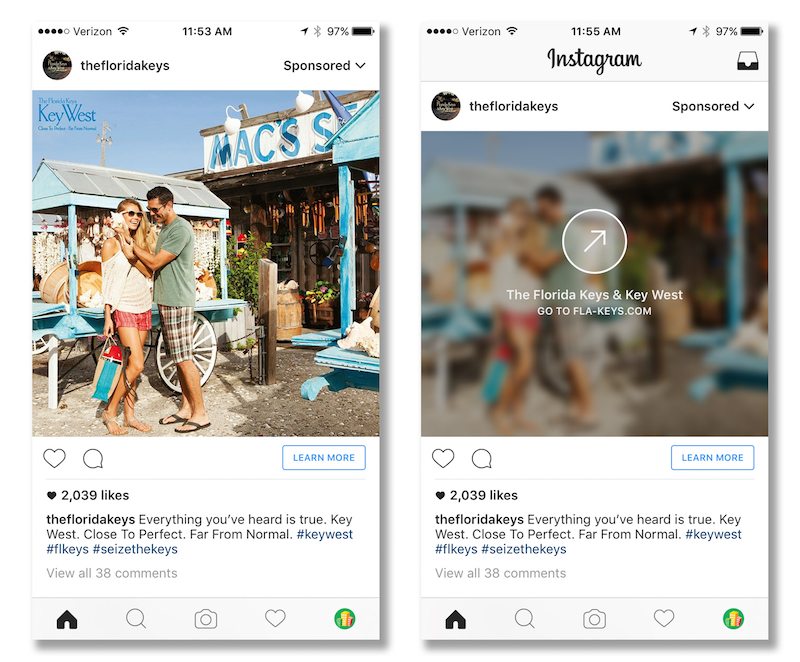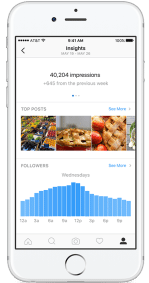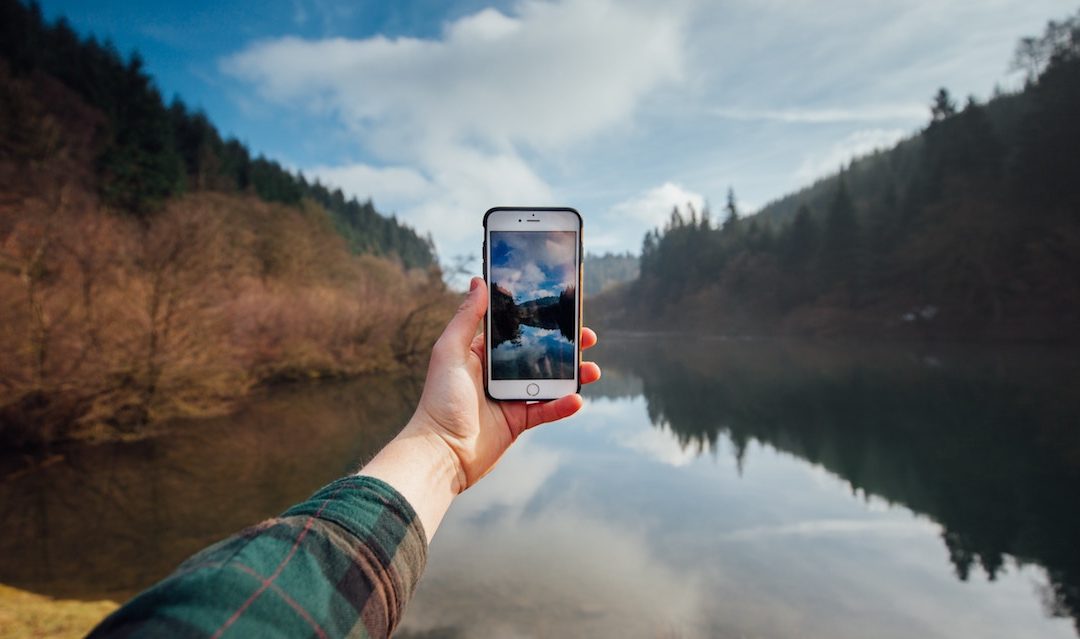Facebook acquired Instagram in 2012 for $1 billion, but users haven’t had to deal with many changes to the platform in that time aside from receiving more filters and photo editing tools. However, the mobile image sharing platform is quickly evolving in the path of other networks before it to monetize and also improve the user experience. After all, you need to keep users happy so they keep using the app and click on the ads that make Instagram money.
Over the last two years, Instagram has been testing ads, improving them with videos and carousel ad options, and making advertising available to all businesses, all while changing the branding and interface on the user side. We’ll go over what all of this means and the exciting changes on the horizon that willåÊmake Instagram more lucrative to businesses than ever.
Advertising
One of the reasons why advertising is so important on Instagram is that without ads, it is almost impossible to drive users off the app and onto your site. Aside from the link in your bio, any links you type into a photo caption aren’t clickable, and users aren’t able to highlight and copy captions to copy links into their browser. Your content basically stays on the app – unless you’re ready to pay.
When you advertise on Instagram, you can do so with a photo, a carousel (set of photos a user swipes through) or a video, which now are up to 60 seconds. On photo ads, when you tap the picture a link to the website appears that you can tap on which opens the website inside of the app. There can also be a call-to-action button (like “Learn More” or “Sign Up”) to drive users to your website.

The advertising experience in Instagram benefits from a lot of innovations thanks to Facebook’s advertising abilities. In fact, you now purchase and manage your ads directly through Facebook Power Editor and Ads Manager, which includes advanced targeting options.
This means you can target audiences that are like your followers but don’t currently follow you, so they’ll learn about your brand. Plus, in this case your followers won’t see the ad, so you won’t be paying for a click that you would have gotten organically. You can also target just your followers, in case you wanted to get the word out about a special deal for your loyal customers.
Instagram Business Profiles
We know the importance of being able to show ROI of your social media efforts – whether through clickthrough rate, social media following growth, or actual conversions. Businesses who create a business profile essentially have the same profile as any user, which means there have been no analytics or proof of performance. The biggest update to date to help social media marketers has been the ability to switch between profiles on one device without logging out – a necessary improvement that only happened in February 2016.
 Finally, Instagram is recognizing the needs of the businesses that use the app, and will be launching business profiles “in the coming months.” The new business profiles will be free accounts that help users get in touch with businesses. Rather than just being able to comment, users will now be able to tap to call, text, or email and get directions right from the app.
Finally, Instagram is recognizing the needs of the businesses that use the app, and will be launching business profiles “in the coming months.” The new business profiles will be free accounts that help users get in touch with businesses. Rather than just being able to comment, users will now be able to tap to call, text, or email and get directions right from the app.
Business profiles will also enable companies to see demographics on their followers, find how their posts performed, and see which ones are doing better than others. Along with helping you to improve the content you’re sending out, you’ll also have the ability to promote a post as an ad, much like how Facebook boosted posts work.
User Experience Updates
We’ll wrap up with some quick updates to the user experience. In May, Instagram introduced their new look including an updated logo, shedding the vintage camera and instead updating to a modern new look.
They also simplified the app itself with a sleek redesign. This was to help clear out clutter and make photos the focus, which even further improves the look of last year’s update to allow horizontal and vertical images. Controversially, they’re testing changing the feed from to chronological order instead show first what Instagram thinks you want to see, with a full rollout coming soon. Many suspect that, just like on Facebook, this will make it harder for brands to be seen unless they pay for advertising.

